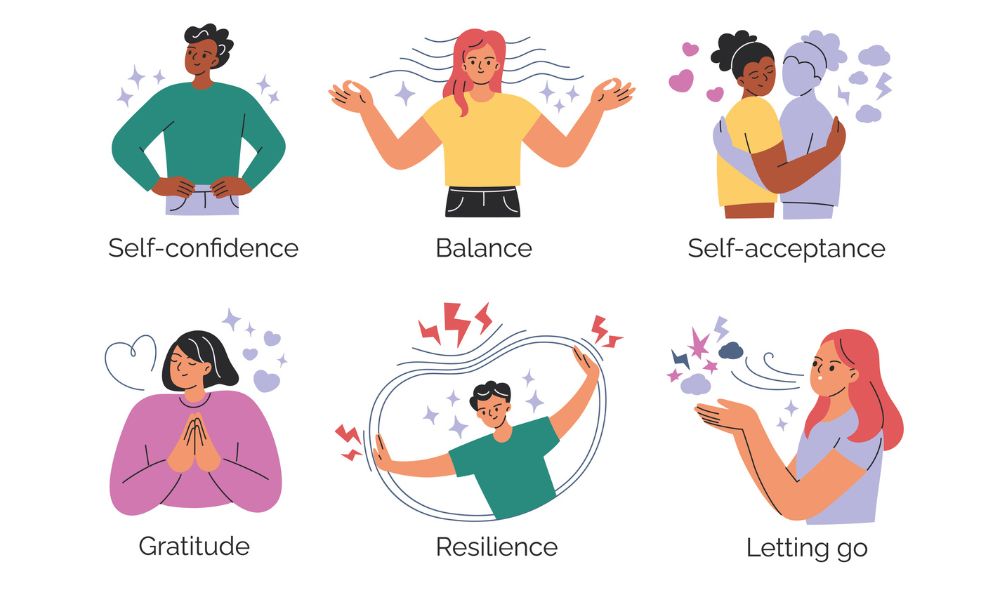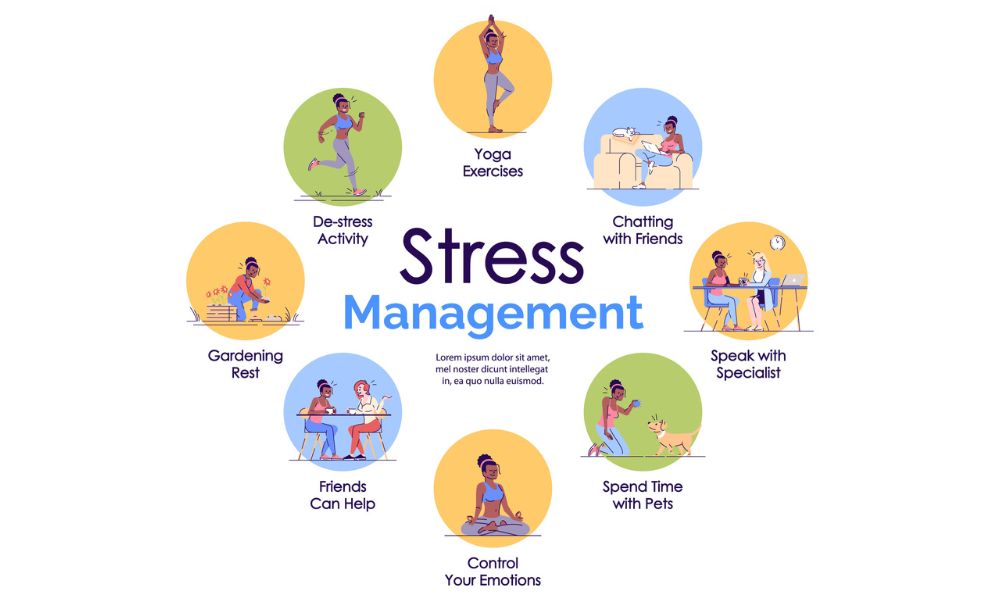Managing anger can often feel overwhelming, but we have an effective tool at our disposal: deep breathing. Deep breathing techniques can significantly calm our mind and body, allowing us to respond to anger rather than react impulsively. By incorporating deep breathing into our daily routines, we can create a healthier emotional landscape and improve our relationships.
Understanding the principles behind deep breathing helps us realise how it engages our body's relaxation response. This simple practice not only reduces stress but also allows us to take control of our emotional reactions. As we explore the role of deep breathing in anger management, we will uncover practical methods to integrate this technique into our lives effectively.
Through mindful breathing, we can create moments of peace when anger arises. Adopting this practice helps us harness our emotions more effectively and contributes to our overall well-being.
Key Takeaways
- Deep breathing helps us manage anger more effectively.
- Integrating this practice into our daily life can reduce stress.
- Mindful breathing creates better emotional control in challenging situations.
Understanding Anger
Anger is a complex emotion that can influence our behaviour and physical state. To manage it effectively, we must grasp its psychological foundations and our body's responses to it. Recognising these elements can aid us in navigating anger in healthier ways.
Psychological Basis of Anger
Anger often arises from situations where we feel threatened, wronged, or frustrated. It is a natural response that can stem from unmet needs or perceived injustices.
There are various triggers for anger, such as personal experiences, social interactions, and even environmental factors.
When we feel anger, it can alert us to problems that need addressing. It's essential to understand our triggers and reactions. This awareness allows us to process anger constructively and helps prevent outbursts that can damage relationships or harm our wellbeing.
Physiological Responses to Anger
When we experience anger, our body undergoes several physiological changes. These changes are part of the body's fight-or-flight response.
Key responses include:
- Increased heart rate: Our heart beats faster to pump more blood to muscles.
- Elevated blood pressure: This prepares us for sudden physical action.
- Heightened senses: Our body sharpens focus, making us more alert to threats.
These responses can be beneficial in the short term but can lead to health issues if not managed. Chronic anger may contribute to problems like heart disease or anxiety. Therefore, understanding these responses can help us use techniques like deep breathing to calm our bodies and regain control.
Principles of Anger Management
When we aim to manage anger effectively, two key principles come to the forefront: identifying our triggers and applying strategies for immediate relief. Understanding what sparks our anger and having techniques ready can make a significant difference.
Identifying Triggers
Recognising our anger triggers is vital. These can be specific situations, people, or even thoughts.
To effectively identify our triggers, we can:
- Keep a journal: Note down incidents that lead to anger and how we responded.
- Reflect: Think about patterns in our reactions. Are there recurring themes?
- Discuss with trusted people: Sometimes, others can see patterns we might miss.
Common triggers might include stress at work, specific comments from friends, or even traffic delays. By pinpointing these triggers, we become more aware of our emotional responses. This awareness is the first step in creating a plan to manage our reactions.
Strategies for Immediate Relief
When anger strikes, having strategies ready can help us regain control quickly. Here are some effective techniques:
- Deep breathing: This method calms the body's response. We can inhale deeply through our nose, hold for a few seconds, and exhale slowly.
- Count to ten: This simple act allows us to pause and reflect before reacting.
- Take a walk: Moving away from the situation provides physical distance and helps clear our mind.
- Use positive phrases: Repeating calming phrases like "Stay calm" can help refocus our thoughts.
Implementing these strategies in the moment can reduce the intensity of our anger and improve our emotional responses. With practice, we can create healthier ways to deal with anger.
Deep Breathing Fundamentals
Understanding deep breathing is essential for managing anger and stress. We can use specific techniques and proper posture to enhance the benefits of this practice. Focusing on rhythmic breathing can help create a sense of calmness and control.
Techniques and Posture
To effectively practice deep breathing, we need to adopt the right techniques and posture. First, we should sit or lie down comfortably with our back straight. This position allows our lungs to expand fully.
Next, we take a deep breath in through our nose, filling our belly rather than our chest. This is known as diaphragmatic breathing. We can count to four as we inhale, hold for a moment, and then slowly exhale through our mouth for a count of six. Repeating this can help us feel more relaxed.
Using our hands can also enhance our focus. Placing one hand on our chest and the other on our belly lets us feel the rise and fall as we breathe. This awareness helps reinforce our breathing patterns.
Rhythmic Breathing for Calmness
Rhythmic breathing plays a crucial role in anger management. The goal is to establish a steady pattern that calms our mind and body. We can begin by setting a comfortable rhythm, aiming for about six breaths per minute.
We can focus on a count of four for inhalation and six for exhalation. This extension of the exhale triggers our body’s relaxation response. We might find it helpful to use a timer or app to maintain this rhythm while practising.
Incorporating visualisation can further enhance this technique. We can imagine a peaceful scene, like a calm lake, as we breathe. This combination of rhythmic breathing and visualisation encourages a greater sense of calm and control over our emotions.
Role of Deep Breathing in Stress Reduction
Deep breathing plays a significant role in managing stress by influencing our body and emotions. It connects our breath to how we feel, allowing us to regulate stress levels more effectively.
Impact on the Nervous System
When we practise deep breathing, it activates the parasympathetic nervous system, which helps to calm the body. This action counters the stress response by reducing heart rate and lowering blood pressure. By slowing down our breathing, we signal to our brain that it is time to relax.
Research has shown that this method can help to decrease stress hormone levels, such as cortisol. As we engage in deep breathing, the body shifts from “fight or flight” mode to a more relaxed state. This change can significantly improve our overall sense of well-being.
Enhancing Emotional Regulation
Deep breathing also helps us manage our emotions better. By taking control of our breath, we create space to process feelings like anger or frustration. This practice allows us to pause before reacting, giving us time to think and choose our responses.
Moreover, consistent deep breathing can improve our mood. Techniques like diaphragmatic breathing can enhance the body's natural calming processes. By incorporating this practice into our daily routines, we can experience a greater sense of emotional stability over time.
Integrating Deep Breathing Into Daily Life
Incorporating deep breathing into our daily routines can greatly improve our ability to manage anger. Through regular practice, we can build resilience against stress and respond calmly in high-pressure situations. This section explores effective routines and strategies for utilising deep breathing.
Routine Practices for Prevention
To effectively integrate deep breathing into our daily lives, we can establish simple routines. One effective method is to set aside a few minutes each morning for dedicated breathing exercises. We can find a quiet space, sit comfortably, and focus on inhaling deeply through our noses, then exhaling slowly through our mouths.
Daily Breathing Routine Steps:
- Choose a time: Mornings or before bed work well.
- Find your space: A quiet area helps us focus.
- Set a timer: Start with five minutes and increase gradually.
- Focus on rhythm: Inhale for four counts, hold for four, exhale for six.
By committing to this routine, we can develop a habit that naturally lowers our stress levels throughout the day.
Utilisation During High-Stress Situations
When we encounter high-stress moments, deep breathing can act as an immediate tool for calming our minds and bodies. We can pause, take a step back, and focus on our breath to regain control.
Steps for Using Deep Breathing in Stressful Situations:
- Pause: Take a moment to recognise our feelings.
- Inhale deeply: Fill our lungs slowly, counting to four.
- Hold: Maintain the breath for a count of four.
- Exhale slowly: Release the breath for six counts.
This practice helps activate the parasympathetic nervous system, which can reduce feelings of anger and anxiety. With consistent application, these techniques become second nature, allowing us to stay calm during challenging times.
Other Complementary Anger Management Techniques
In addition to deep breathing, we can explore other effective techniques for managing anger. These methods can help us control our emotions and improve our overall well-being.
Mindfulness Meditation
Mindfulness meditation encourages us to focus on the present moment. This practice can help us observe our thoughts and feelings without judgment.
By concentrating on our breath and bodily sensations, we create space between our emotions and our reactions. This helps us to not react impulsively when anger arises.
Research shows that mindfulness can reduce stress and improve emotional regulation. We might find it useful to set aside a few minutes each day for this practice. Apps and online resources can guide us if we are new to mindfulness.
Simple techniques include noticing our breath or practising body scans, which can make us more aware of our anger triggers.
Physical Exercise
Physical exercise is another excellent way to manage anger. Engaging in activities like running, swimming, or even a brisk walk can release endorphins, which improve our mood.
Regular exercise reduces stress levels, making us less sensitive to anger triggers. We can choose activities that we enjoy, which makes it easier to stick to a routine.
Even short bursts of physical activity can be beneficial. For instance, doing jumping jacks or a quick workout in our living room can help us blow off steam.
By incorporating physical exercise into our daily lives, we enhance our ability to cope with anger more effectively.
Challenges and Considerations
While deep breathing can be an effective tool for managing anger, there are several challenges and misconceptions that we must address. Understanding these factors can help us better utilise this technique.
Misconceptions About Deep Breathing
Many people believe that deep breathing is a simple solution or a quick fix for anger. They may expect immediate results without recognising that it requires practice and commitment. Deep breathing is not just about inhaling and exhaling; it's a process that involves focusing on our breath and calming our mind.
Some think that deep breathing alone can resolve deeper emotional issues. While it can significantly reduce stress and anger levels, it may not address underlying problems. Incorporating deep breathing with other strategies, like therapy or counselling, is crucial for more comprehensive anger management.
Limitations and When to Seek Professional Help
Although we can benefit from deep breathing, it won’t work for everyone or in every situation. Some people may find it difficult to focus on their breath, especially in moments of high anger. This can lead to frustration and a belief that the technique is ineffective.
If feelings of anger are overwhelming or interfere with daily life, seeking professional help is essential. Mental health professionals can provide tailored support and additional strategies for coping with anger. Recognising when to ask for help is a vital step towards better emotional health and greater well-being.
Frequently Asked Questions
In this section, we will explore how deep breathing exercises can help us manage anger. We will look at specific techniques, their effects on our emotions, and the benefits of regular practice.
How can deep breathing exercises facilitate the immediate control of anger?
Deep breathing exercises help us calm our bodies when we feel angry. By slowing our breathing, we send signals to our brain that it’s time to relax. This can reduce feelings of tension and frustration quickly.
What are some effective anger management exercises for adults?
We can benefit from various anger management exercises, such as deep breathing, mindfulness, and physical activity. Activities like yoga and Tai Chi also support anger management by promoting relaxation and self-awareness.
Which relaxation techniques can be employed to mitigate feelings of anger?
In addition to deep breathing, techniques like progressive muscle relaxation and guided imagery can be effective. These methods help us release physical tension and create a sense of peace that counters anger.
In what ways does deep breathing impact stress levels, and how might this relate to anger management?
Deep breathing activates our parasympathetic nervous system, promoting a state of calm. Lower stress levels can help prevent anger from escalating, making it easier for us to handle challenging situations calmly.
What are the psychological advantages of practicing deep breathing regularly?
Regular practice of deep breathing can enhance our emotional resilience and improve our mood. It allows us to respond to stressors more effectively, reducing the likelihood of reacting with anger.
What type of breathing exercise is most effective for managing episodes of anger?
We find that deep belly breathing is particularly effective. This technique involves inhaling deeply through the nose and exhaling slowly through the mouth, helping to slow our heart rate and promote relaxation.





















